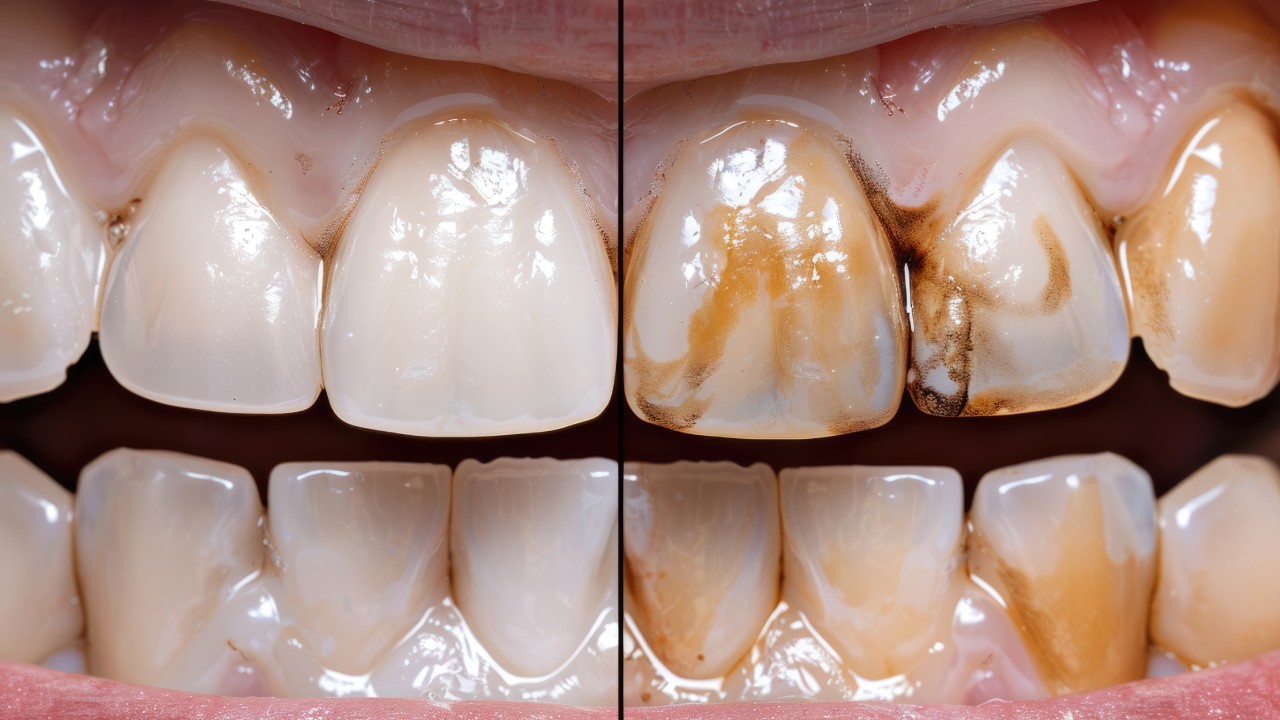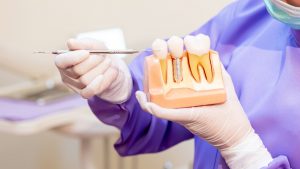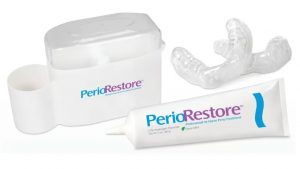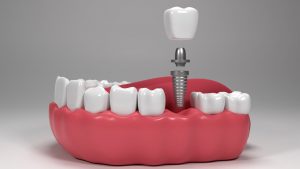Not every dark spot on your tooth means you have a cavity. In many cases, it could just be a surface stain from everyday habits like drinking coffee, tea, or soda. While both stains and cavities can affect how your teeth look, they are very different in terms of cause, severity, and treatment.
In this article, you’ll learn how to tell cavities and stains apart. We’ll explain their symptoms, causes, how dentists diagnose them, and what treatment options are available for each. This guide will help you decide whether you need a cleaning or something more serious like a filling.
What Is a Tooth Stain?
A tooth stain is a form of discoloration that affects the outer surface of your teeth, primarily the enamel. Unlike cavities, stains do not involve tooth decay or structural damage. They often result from external substances or internal changes in the tooth. The types of tooth stains are:
Extrinsic Stains
These stains form on the outer layer of the enamel. Common culprits include dark-colored drinks like coffee, tea, red wine, and cola, as well as tobacco use. These stains are usually removable through professional cleaning or whitening treatments.
Intrinsic Stains
Intrinsic stains develop inside the enamel. They often result from certain medications (like tetracycline), excessive fluoride during childhood, or trauma to the tooth. These stains are more difficult to remove and may require cosmetic treatments such as veneers or bonding.
Age-Related Stains
As you age, the enamel on your teeth naturally wears down, revealing the yellowish dentin underneath. This type of discoloration is a normal part of aging but can become more noticeable over time.
Common Causes of Tooth Stains
- Regular consumption of staining foods and drinks such as tea, coffee, red wine, berries, and soda
- Smoking or chewing tobacco
- Inadequate brushing or flossing, which allows plaque and stain-causing particles to build up
Visual Clues That Suggest a Stain
Tooth stains often appear as yellow, brown, or dark spots on the surface of your teeth. Unlike cavities, stains usually have a smooth texture and do not cause pain or sensitivity. They remain stable over time and don’t deepen or worsen unless the source continues.
What Is a Dental Cavity?
A dental cavity is a permanent area of tooth damage caused by decay. It starts when harmful bacteria in your mouth produce acid that wears down the enamel. Unlike stains, cavities are a form of tooth disease and require professional treatment to prevent further damage.
How Cavities Form
Cavities develop through a process that involves bacteria, plaque, and dietary sugars. Here’s how it happens:
- Plaque, a sticky film of bacteria, builds up on your teeth.
- When you consume sugary or starchy foods, the bacteria in plaque feed on these sugars.
- This process produces acid that slowly erodes your tooth enamel.
- Over time, the enamel weakens, leading to the formation of small holes or pits, known as cavities.
If left untreated, cavities can penetrate deeper layers of the tooth, affecting the dentin and even the pulp, which may lead to infection or abscess.
Common Causes of Cavities
- Frequent snacking on sugary foods or drinking acidic beverages like soda and fruit juice
- Poor oral hygiene, such as inconsistent brushing and flossing
- Dry mouth, which reduces saliva that helps neutralize acids
- Inadequate fluoride, which helps strengthen enamel
Symptoms of a Cavity
Cavities don’t always cause immediate pain, especially in the early stages, but common warning signs include:
- Sensitivity when eating or drinking something hot, cold, or sweet
- A visible hole or pit in the tooth
- Sharp pain or persistent toothache, especially when biting down
- Brown, black, or gray discoloration (may resemble a stain but often feels rough or sticky)
Unlike surface stains, cavities continue to grow if not treated, eventually leading to more serious dental issues. Early detection and prompt treatment can help preserve the tooth and avoid more invasive procedures.
Cavity vs Stain: Key Differences
Telling the difference between a cavity and a stain can be tricky at a glance, but understanding their distinct features can help you know when to seek dental treatment. Below is a quick comparison of how cavities and stains differ in cause, appearance, and symptoms:
| Feature | Cavity | Stain |
| Cause | Caused by bacteria and acid that erode enamel and dentin | Caused by food, drinks, tobacco, or aging |
| Color | Usually brown, black, or gray | Often yellow, brown, or dark |
| Texture | Feels rough or may have a noticeable pit | Feels smooth on the tooth surface |
| Pain/Sensitivity | Often causes discomfort, especially with hot, cold, or sweet foods | Rarely causes any sensitivity |
| Location | May appear deep within grooves or between teeth | Typically found on the outer surface and visible |
| Progression | Gets worse over time without treatment | Can be removed or reduced with cleaning or whitening |
Cavities are signs of active tooth decay and need professional dental treatment. In contrast, stains are more often cosmetic issues that do not pose a threat to your oral health. If you’re unsure which one you’re dealing with, visiting your dentist for an evaluation is the best next step.
How Dentists Diagnose: What to Expect
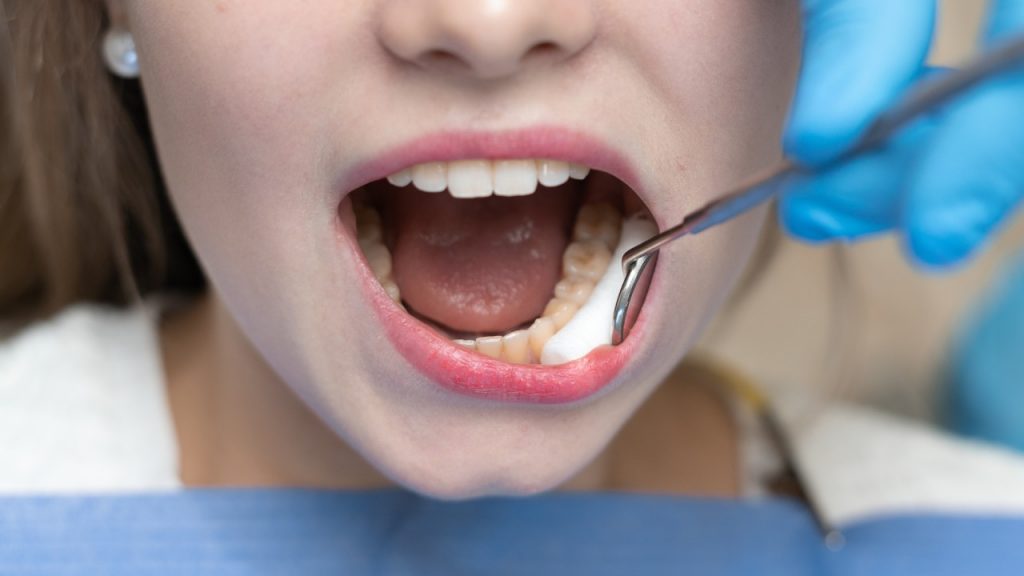
If you’re unsure whether you have a cavity or a stain, your dentist can make an accurate diagnosis using a combination of tools and techniques. Here’s what typically happens during a dental evaluation at MySmile Dental Care clinic:
Visual Exam
Dr. Mehru Bhatia and her team begin with a thorough visual inspection of your teeth. They examine the color, shape, texture, and location of any spots or discoloration. Stains often appear on the tooth surface and look smooth, while cavities may show up as darker areas with a rough or pitted texture.
X-rays
If the issue isn’t clearly visible, our team may recommend digital dental X-rays. These allow us to spot early or hidden cavities that can’t be seen during a basic exam.
Explorer Test
We may use a gentle dental explorer (a fine, curved tool) to check for soft or sticky areas, which can indicate enamel breakdown. While stains feel smooth and solid, cavities often create weak spots that catch the instrument.
Discussion of Symptoms
We’ll also ask if you’ve noticed any pain, tooth sensitivity, or discomfort when eating or drinking. Cavity pain can be triggered by hot, cold, or sweet foods, while stains usually don’t cause any symptoms. At MySmile Dental Care, we take the time to explain what we find and guide you through your options.
Treatment Options
At MySmile Dental Care in Anaheim Hills, we tailor treatment based on whether you’re dealing with a surface stain or a cavity caused by decay. Here’s how we typically approach each condition:
For Stains
If your discoloration is the result of staining rather than decay, we offer several cosmetic solutions to restore the natural brightness of your smile:
- Professional Cleaning (Scaling and Polishing):
We start with a thorough cleaning to remove surface-level stains caused by food, beverages, or tobacco. This often makes a noticeable difference in your tooth color.
- Teeth Whitening (In-Office or At-Home Trays):
For deeper extrinsic stains, we offer professional whitening treatments like Perio Restore. Choose between in-office whitening for fast results or custom take-home trays for a gradual and controlled approach.
- Veneers (for Intrinsic Stains): Whitening may not be effective hen stains are embedded within the tooth. In these cases, we recommend porcelain veneers to cover the discoloration and enhance the appearance of your smile.
For Cavities
Cavities require prompt dental treatment to stop decay and preserve the tooth. Depending on the severity, we may recommend one of the following options:
- Fluoride Treatments (Early Stages): If we catch a cavity in its earliest stage, before a hole has formed, we may apply a fluoride varnish to remineralize and strengthen the enamel.
- Dental Fillings: For small to moderate cavities, we remove the decayed portion of the tooth and fill it with a strong, tooth-colored composite material to restore its shape and function.
- Root Canal Therapy: If decay reaches the inner pulp of the tooth and causes infection, a root canal is needed to clean and seal the inside of the tooth and prevent further damage.
- Crown or Extraction (Advanced Decay): In severe cases where the tooth structure is badly damaged, we may recommend a dental crown to protect and rebuild the tooth. If the tooth is beyond saving, a tooth extraction followed by replacement options like implants may be necessary.
Endnote
Tooth discoloration can result from different underlying causes, and not all spots are the same. Identifying whether it’s a cavity or a stain requires careful evaluation through visual signs, symptoms, and professional diagnosis.
If you’re unsure what you’re seeing or feeling, a dental exam can provide clarity and peace of mind. Staying proactive with regular check-ups and good oral hygiene is the best way to keep your teeth healthy and your smile bright.

